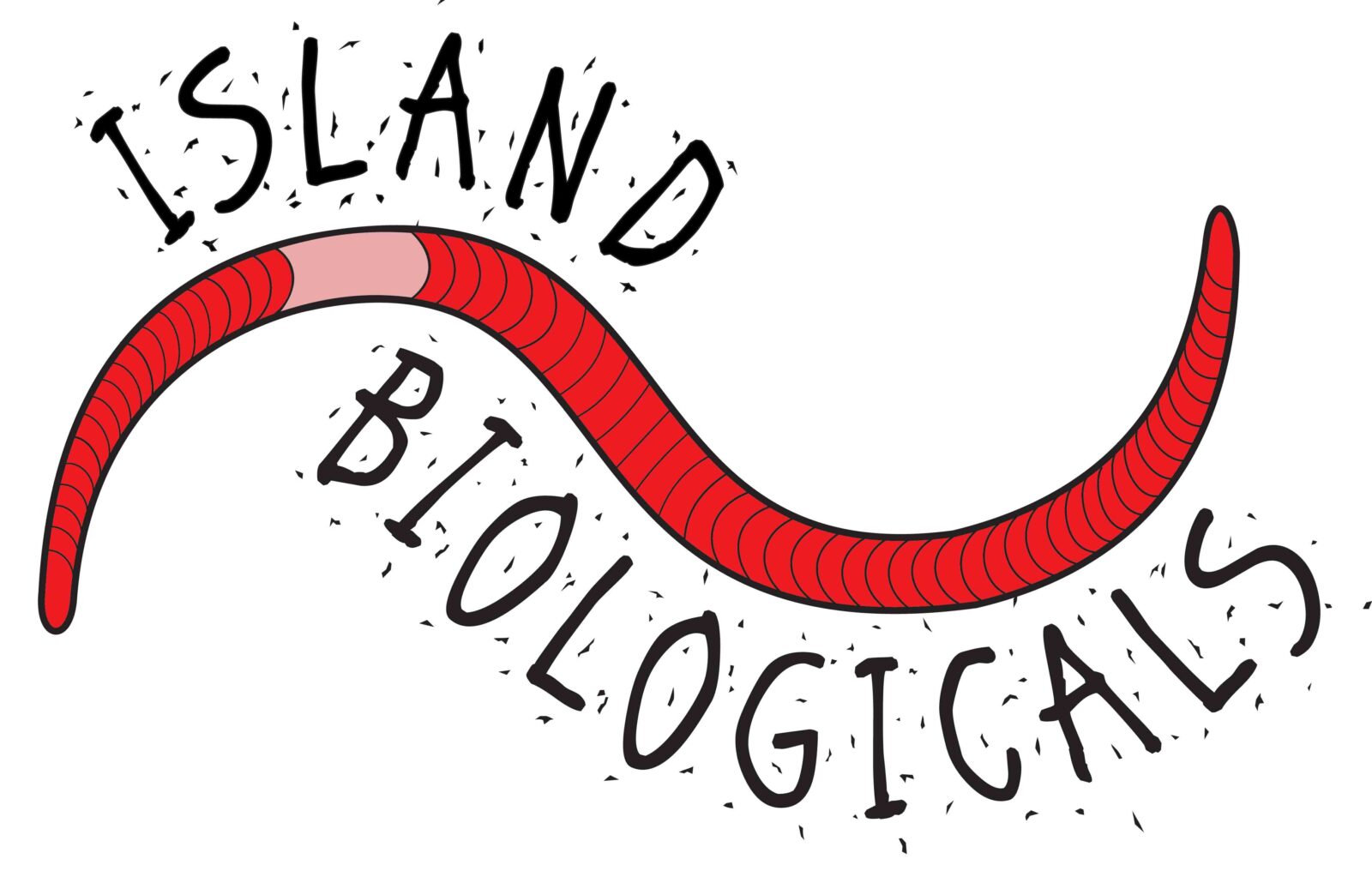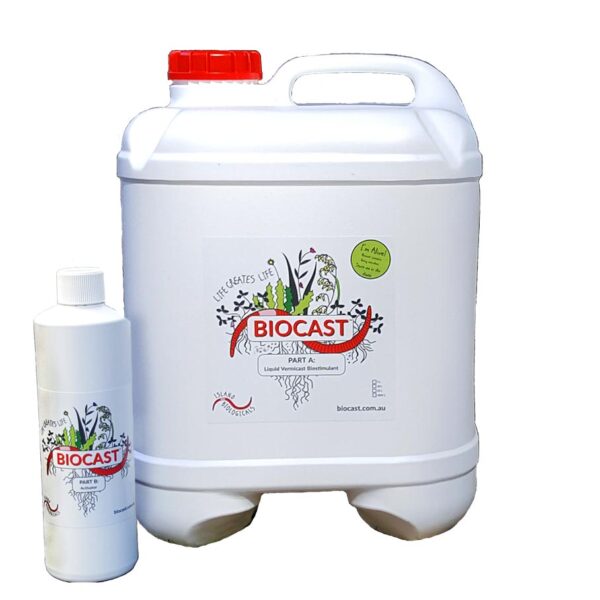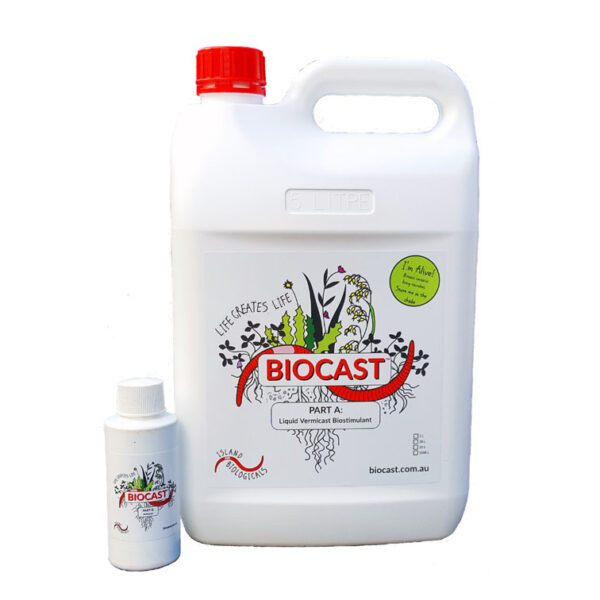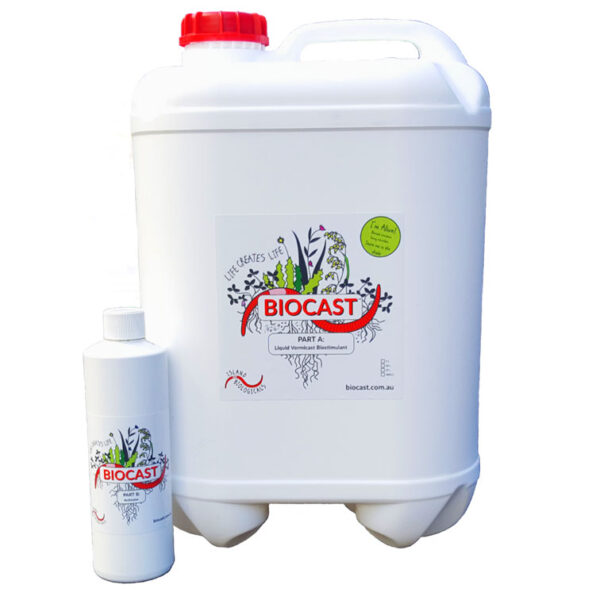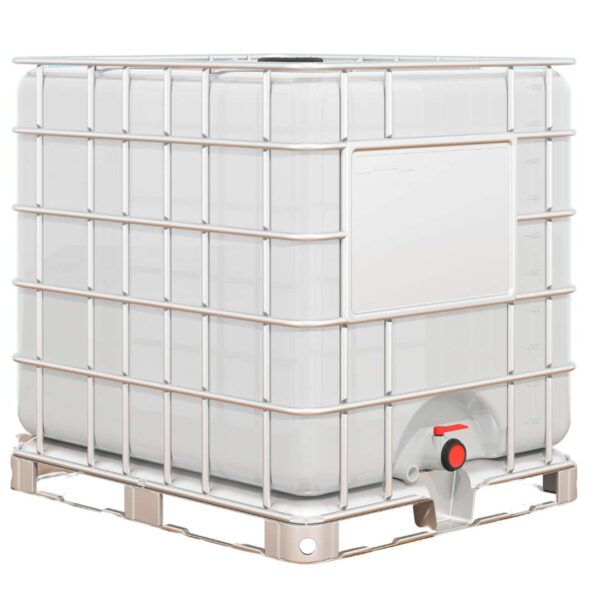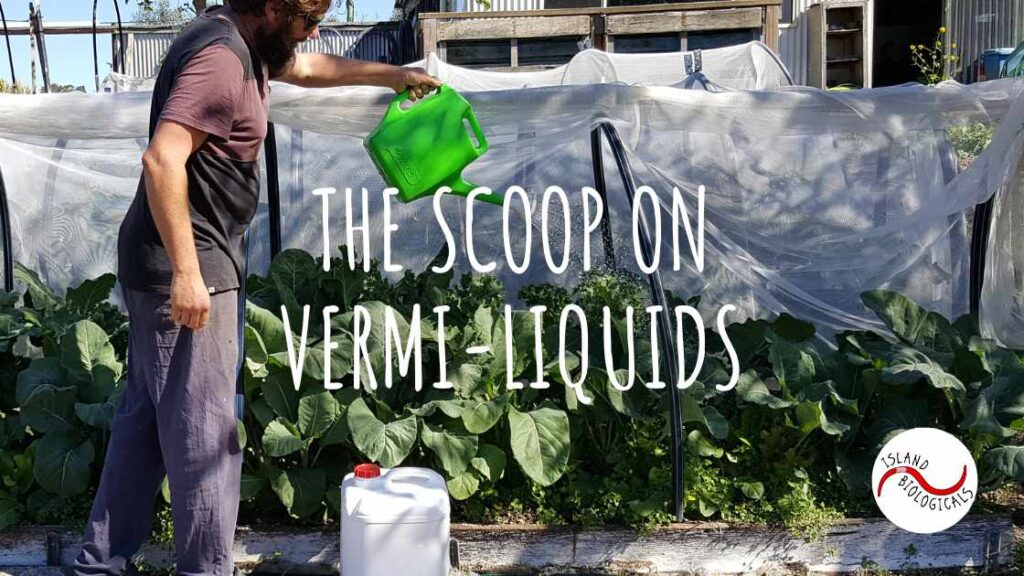
There are heaps of different terms out there to describe the liquids produced as a result of some sort of worm composting process – largely because there are so many different ways vermiculture can be done! They can be broken into four categories. These are leachate, vermiwash, teas, and extracts. ‘Worm wee’ is not one of the categories, because worms don’t wee! Let’s talk about each, and where Biocast fits in with the mix.
Leachate
Leachate is the excess fluid that drains from a worm system that is running ‘wet’. This applies to most home worm farms. A lot of the liquid comes from the decomposition of fresh organic material, and may or may not have touched a worm, let alone been through the body of a worm where all the magic happens. Because of this, leachate has the potential to carry pathogens and probably shouldn’t be used directly on your veggies.
Vermiwash
Vermiwash is gained by running water through a worm farm, and collecting the runoff. This is the most common method used by other Australian vermi-liquid producers. Around the world, there are many different setups to collect this liquid, from a pit at the end of a windrow, to more complex layers in a raised system. There can be huge variability in the quality of the end product based on the quality of the compost; because, again, not all the liquid will have been through material which has been through the body of the worm.
Vermicompost teas
These methods make a ‘tea’ out of worm castings or vermicompost. Around the world there are also many different ways people are doing this. A vermi-liquid tea is made by adding a small amount of vermicompost or castings, microbe food, and water, and agitating aerobically with the goal of proliferating microbes. Due to the unstable nature of aerobically-produced liquids (ie they go off real quick), these are home jobbies. As the gut of a worm is largely anaerobic we also question the usefuless of an aerobic process.
Vermicast extracts
A liquid produced as an extract is different from a tea because it uses a larger amount of starter material, does not add a food source, and does not need to be agitated aerobically. The goal is to dissolve the worm cast and get ALL the goodness from the cast such as bioavailable minerals, signalling molecules, hormones, humic acid and so on; rather than just the microbes (though of course they’re great too). Biocast fits here as a vermicast extract. This means that we dissolve fully finished worm castings into water. We quality control this by doing it for a set amount of time with a set amount of cast and a set amount of water. Because the cast is fully finished, we know that every drop contains the magic of the earthworm. The way we extract means that the liquid is shelf stable, plus every purchase includes a bottle of ‘Part B’ microbe food, so you still get the microbe proliferation effect as you get Biocast ready to apply!
